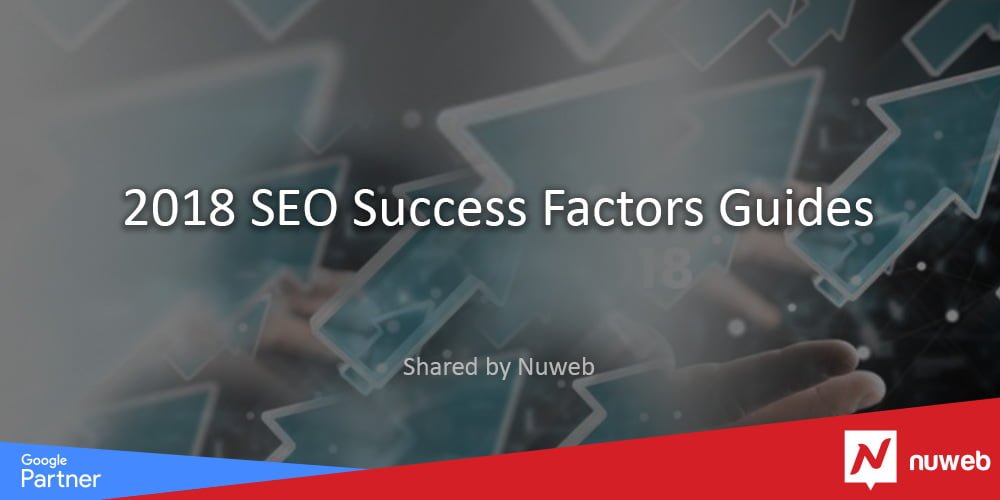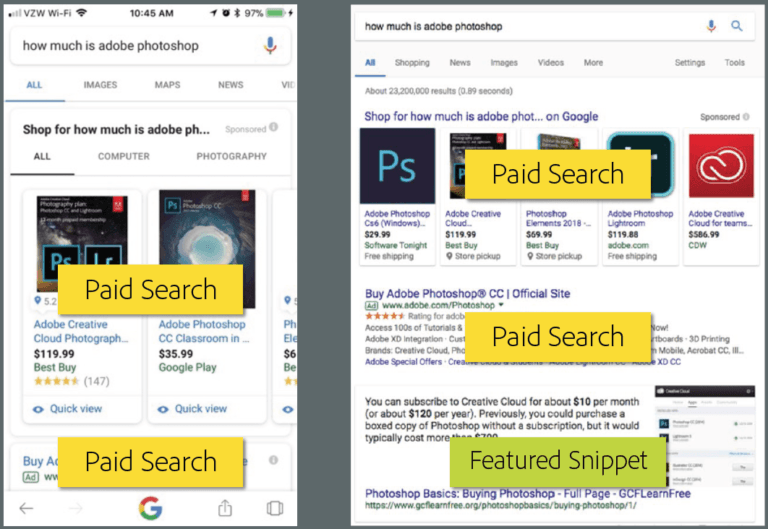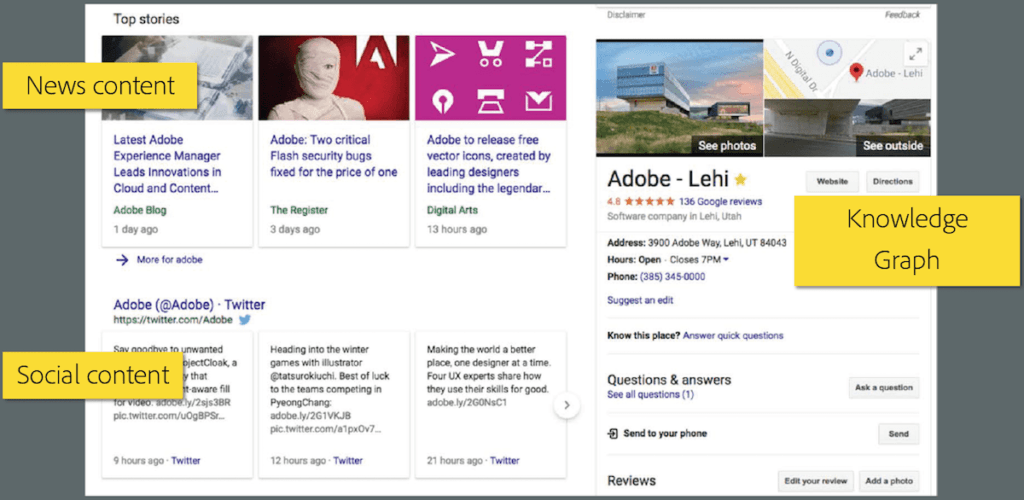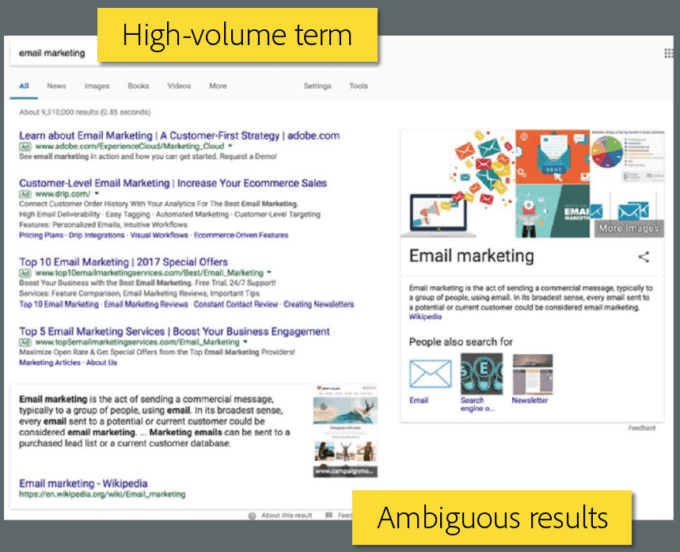
09 Nov 2018 SEO Success Factors Guides
Ready to learn the secret to search engine optimization (SEO)?
Well, I hate to break it to you, but there really is no secret.
There is no secret sauce.
There is no secret recipe.
SEO isn’t about magic tricks or gaming the search algorithms.
What you really need is a thorough understanding of what people want when they search – and why they want (or need) it.
The fact that there is no big secret is what makes SEO so hard. It’s also a constantly moving target.
And we don’t make the rules – the search engines do.
That said, organic search is one of the most profitable marketing channels there is – if you’re willing to invest in it.
Where Search Is Heading
If you’re brand new to the world of SEO, I highly recommend you start with our guide, SEO 101: Learn the Basics of Search Engine Optimization, before going further.
Already have a grasp on the SEO basics? Great! Let’s continue.
A complete guide to SEO – and where search is heading in 2018 and beyond – is too hard to fit into one article.
Many factors impact your SEO success, including:
- Technical: This includes anything that affects the performance of, visibility of, or how search engines access your site. This includes indexing and crawling, schema, page speed, site structure, URL structure, and much more.
- On-page: This is your content – both what is visible to users on your webpages (text, images, video, or audio), as well as elements that are only visible to search engines (HTML tags, structured data).
- Off-page: This is anything that’s not on your site. Ultimately, off-page factors are about growing and demonstrating your website’s authority, relevance, and trust and building an audience. Think link building, social media marketing, PPC marketing, reviews, and user-generated content.
In this chapter, we’ll start exploring the world of SEO in three of the most important areas that will help set you up for success:
- Search experience optimization: What opportunities you have to be more present to your customers/audience.
- Content strategies for actual people: The importance of content and what it means to be relevant.
- The impact of voice search on SEO: We’ll look into the not-too-distant future and show you why the time is now to optimize for voice search. So don’t wait!
1. Search Experience Optimization
When you hear the acronym SEO, it usually means Search Engine Optimization. And, as you’d expect, SEO in this context means optimizing your website for search engines (or, far less likely, optimizing a search engine).
But Search Experience Optimization is a newer way to think about the term SEO. Some have even called search experience optimization the “new SEO.”
Search experience optimization is optimizing for people in all the places your brand and content could possibly appear. It goes beyond the nuts and bolts of optimizing for search engines – although those nuts and bolts are still incredibly important!
Search strategies require us to create brand experiences, using the search results to build relevance.
Ninety-three percent of online experiences begin with a search engine, according to a 2006 Forrester study. That means a search engine is the biggest billboard there is for brands.
Search engines also travel with us wherever we go. Google refers to these search experiences as moments, with four of the biggest being:
- I-want-to-know.
- I-want-to-go.
- I-want-to-do.
- I-want-to-buy.
Contemporary SEO strategies require us to be creative to get visibility.
Ranking Above the Fold: Desktop vs. Mobile
Check out these results. What do you see?

On mobile, there are no organic results above the fold.
On desktop, the only organic result you see is a featured snippet.
On Google, aside from paid search ads (which can supplement organic visibility in search results), you also have to contend with prominent search features, which vary depending on the query.
You have to optimize in every way you possibly can to improve visibility of your brand. Sometimes ranking “number one” in organic search won’t even matter because the page you’re trying to rank won’t even show “first.”
Let’s look at just a few of these search features that come before the first organic position:

News & Social Content
Google News and social content are areas where your content can gain great visibility. But news and social are wholly dependent on the freshness of query (how current/hot the topic is).
In order to rank/appear in these areas, you need a good understanding of your space and how Google responds to a query. Not every query will show news or social content, so it’s important to understand how keywords react in different ways.
Knowledge Panels
Google’s knowledge panels, which are powered by Google’s Knowledge Graph, display the basics about a business. This includes things like:
- Location.
- Phone number.
- Ratings.
- Hours of operation.
This is a huge way to build trust in your brand. Searchers have been conditioned to look for certain parts of search results, such as knowledge panels, to get the trusted information they want or need.
Getting these panels is important if you’re a brand (or any other type of entity). If you aren’t in the Knowledge Graph, you might be in a little trouble.
People Also Ask
People also ask is another search feature in which content is directly pulled in line with results. These are real terms people are searching for and content from websites is pulled in to populate these results.
You can use this search feature directionally to identify content optimization opportunities or additional new pieces of content you could create to help target the audience you want to reach.
Apply SEO to Different Platforms
In addition to optimizing for different parts of search results, you can apply SEO methodologies to any platform someone can search on.
These optimization opportunities, each of which is essentially a discipline unto itself, include:
- App store optimization.
- YouTube channel and video optimization.
- Google My Business optimization.
- Social media optimization.
- Third-party sites and vertical search engines (e.g., Amazon and Yelp).
All of these searchable platforms are completely adaptable to the principles of SEO and provide opportunities for you to gain additional brand visibility.
Plus, when you optimize for other search experiences, content about your brand may be pulled into traditional search engine results (Google, Bing, etc.) as well.
Takeaways:
- Be visible as much as you can. Use every part of the results to create search experiences.
- Optimize beyond the search engine. This will ultimately lead to additional real estate occupation in the search engine results themselves.
- SEO assumes a much larger context when the goal is search experience optimization, not just search engine optimization.
2. Optimize Content for People

It’s sometimes easy to forget that it’s all about optimizing for people – your customers, readers, or subscribers.
So always optimize for people, not search engines.
Create content for customers, not for the sole purpose of ranking higher.
When you put people at center of your content strategies, chances are you’ll be way more successful in search engines.
Content, Keywords & Search Algorithms
Google has made several algorithm updates and changes over the years.
Two key algorithm changes are extremely important in terms of how we think about content and keywords:
- Hummingbird: This update gave Google the ability to understand full queries, not just individual keywords as part of a search. It also introduced the concept of semantics, or different keywords surrounding a main topic. Optimizing your pages for a single keyword from top to bottom is no longer a viable SEO tactic, nor does it look natural to people.
- RankBrain: This update gave Google the ability to understand queries it had never processed before and create associations necessary to be able to decipher the full meaning of query to deliver results through machine learning. It is one of the top three ranking factors, along with content and links.
So how do these two algorithm updates impact content strategies?
You don’t want to focus too narrowly on keywords. While rankings are important, ranking isn’t the only thing that matters.
Keywords can sometimes betray you. Keywords may have a high search volume but can lack specificity and value.
Take this search for [email marketing] for example:

The search volume for this particular keyword is roughly 18,000.
Even if you were to write content well enough to rank for this keyword, how much of that traffic will be relevant? How many conversions will you be able to generate? Probably not a lot.
The term “email marketing” is very generic. This is why Google shows ambiguous results.
There’s a clear difference in a term like “email marketing” and “enterprise cross-channel marketing platforms”.
What’s the difference?
Intent.
One keyword is informational, while the other is transactional. Transactional queries are more valuable to conversion-driven businesses.
You can optimize for more transactional queries by targeting long-tail search keywords. This specificity of keywords (even if the keyword has low search volume) will help you create more relevant content and get more qualified traffic to your site.
At a tactical level you have to get creative with your topic and keyword research. Really understand how people search for what they search for.
Why Content Matters
There’s no denying the importance of content.
Without content there is no visibility.
To underscore how important content is (and how important the selection of keywords can be to the effectiveness of content), consider this:
- 60 percent of queries are four words or more.
- The average word count for a first-page result on Google is almost 1,900 words.
This begs the question: how do we know what people want? How do we know what people are going to search for?
Give People Content They Want

If you pay close enough attention, your audience will tell you what they want.
Some of the best audience tools are contained right in the Google search results:
- Autocomplete
- People also ask.
- Related searches.
Those are all queries/questions that people ask when they search. This data presents real opportunities for additional content.
Addressing pains points and directly answering questions will help you deliver the right content in a time of need to searchers. That’s fundamentally what a search is – a need. It will also help you understand your customers better.
Social Listening
Social platforms also provide ample opportunities to learn about people and listen to needs.
Many people use social media to complain. A lot. Use it to your advantage.
Use your own or competitive comment sections. Pick up on common topics/themes.
Monitor conversations on every social network you’re active (and anywhere your brand is discussed).
What are people complaining about? Maybe it’s:
- Customer service issues.
- Being unable to find out when your business is open.
- Your product(s) or service(s).
You can turn any of these into content.
Competitive Research
Analyzing the sites in search results for competitive topics reveal a lot about what is working, and what isn’t, about your business. Do a content audit and find content gaps, or areas you want to emulate.
No matter what you choose, the end goal is always same: gain more context. Expand on topics your audience needs you to show up for.
This type of research can be uncomfortable. You may have to face some hard truths when you take any of these routes. But it’s worth it as you’ll understand the needs of people you want to reach.
Make It Mobile-First!
Great content means optimal accessibility, regardless of device. Truly mobile-first experiences that load as fast as possible.
One way to do this is using Accelerated Mobile Pages (AMP), especially if you rely heavily on mobile organic traffic. Having content that loads lightning fast is just plain good user experience (and good business).
Slow loading pages can potentially impact your SEO performance – and your bottom line. Always be testing and optimizing!
If you’re unsure about your mobile experience, test all your pages. Use any tool you can to optimize the user experience.
There are many great tools, including Pagespeed Insights. Use them to identify problem areas, such as how quickly your pages load and render.
Fun fact: In 2012, Google figured out that they would lose 8 million searches per day by slowing down results by just four-tenths of a second. While that may not seem like a lot, considering Google delivers results for more than 3 billion queries per day, that’s 8 million searches Google can’t serve ads on. That means less revenue for Google. And advertising is primarily how Google makes its money.
Be Prepared for the Mobile-First Index
Google has been telling everyone to go mobile-first for years but now it’s happening with the mobile-first index.
What this means is Google will crawl mobile sites at a higher frequency than desktop versions of sites. It also means that mobile is more critical to SEO than ever before. Watch developments in this area closely.
Make SEO Part of Your DNA
Optimize your content from the start. It will save you a lot of headaches in the end.
SEO is a process, not a goal. SEO is never done. You’re never done optimizing.
Every page can be optimized because there’s no such thing as a perfect website. You need to become “least imperfect.”
In other words, you don’t need the best website in the world. You just need a website that’s better than your competition.
Being consistent with the SEO basics is the perfect way to do that:
- Optimize your titles and meta descriptions.
- Use readable user and search friendly URLs.
- Optimize video content (if you have it).
- Optimize header tags (H1, H2, H3, etc.).
- Link to deeper content within your site.
- Create and optimize topically-relevant content.
All of these items might seem like no-brainers to seasoned SEO professions. But you’d probably be surprised to see how often sites don’t have the most basic things (e.g., title tags on their most important pages).
Your navigation and internal linking structure is the thematic backbone of your site. Use it to signal to search engines the topics of your site – what you want to be known for.
Takeaways:
- Embrace long-tail keywords. Don’t limit yourself with a strategy that only targets generic/ambiguous keywords.
- Understand audience intent and create content for it. Listen to your audience. They will tell you what content you need to create.
- Optimize from the start. Build your foundation and cover all the basics (technical SEO and on-page optimization).
3. Voice Search Optimization
Voice search is closer than you think.
Pay attention to changes in search behavior and shifts in search results. Gather insight now to prepare for the future.
A whole new generation of people is coming. Their primary relationship with a search engine is to speak to it – not to type or tap. This is a huge change.
With a proliferation of voice-assisted devices that are easy to use (even for older generations), we’re fast approaching a voice-first shift in search behavior.

Position Zero
Featured snippets are already starting to play a critical role in how Google provides search results. This is the new field of play in SEO.
Google’s featured snippets appear above the first organic search result, so it provides a huge boost in terms of traffic, visibility, and trust. People trust featured snippets so much that they often won’t click on any other organic results.
Position zero is largely question-driven. Google provides direct answers to questions, pulling an excerpt of content directly from a website into its featured snippet feature.
Optimizing for Voice Search
Voice search has one result. Position zero is the only result spoken back to you.
To have success, it’s important to know the content and context of search:
- Identify common questions and queries your audience has.
- Create content to directly address those questions and queries.
Turn Content Into Actions & Skills
Google takes a few types of published content and makes it voice searchable for:
- News
- Recipes
- Podcasts
Alexa skills also make content searchable:
- Web-based services
- Information searches
The Future of Voice Search
There’s a lot we still don’t know about voice search.
- Voice search data isn’t available: Google doesn’t show voice search data in the same way it does for desktop and mobile search in the Search Console.
- How search behavior is changing: When mobile was becoming a thing, we had data to show “near me” type searches, reflective of those on the go, were exploding. We don’t yet know the voice search equivalent to “near me” searches.
What do we know?
We know voice search consists of 10 percent of all searches, and that number is increasing. Just like mobile 6-7 years ago, voice search is coming.
So here lies the SEO opportunity. How will we define the methodology of voice search experience to continue to be present with relevant content when people need it?
Takeaways:
- Prepare for a voice-first world.
- Optimizing for position zero is optimizing for voice search.
- Make content searchable on voice-enabled devices.
Summary
As you approach SEO, especially in terms of content, make sure your strategy takes these three areas into account:
- Creating search experiences is the new SEO. Optimize for every opportunity you can. Take ownership of the search results, including outside of traditional organic search. Be present. Be relevant. Build trust in the people who are searching for your brand, wherever that is.
- Create content for people, not search engines. This is how you deliver great digital experiences and understand your customers better. Focus on the topics people want rather than worrying about keywords as much. Use your content assets to listen to your audience and create content that directly addresses their questions and pain points. Build a foundation you need for good SEO going forward.
- Voice search is coming. Don’t wait. Aim for position zero in search results and make content voice-searchable.
Editor’s notes:
This post was mostly based on a session at Adobe Summit (The Future of SEO: Is Your Content Strategy Ready?) presented by Matt Young, business consultant, Adobe Customer Solutions.
This is also the new first chapter of SEJ’s Complete Guide to SEO, which is currently being updated, revised, and improved for 2018. Stay tuned over the coming weeks as we publish more chapters from the guide!
Image Credits
Featured Image: Paulo Bobita
All other images/screenshots created by Matt Young/Adobe, used with permission.
Source
https://www.searchenginejournal.com/seo-guide/seo-success-factors/

